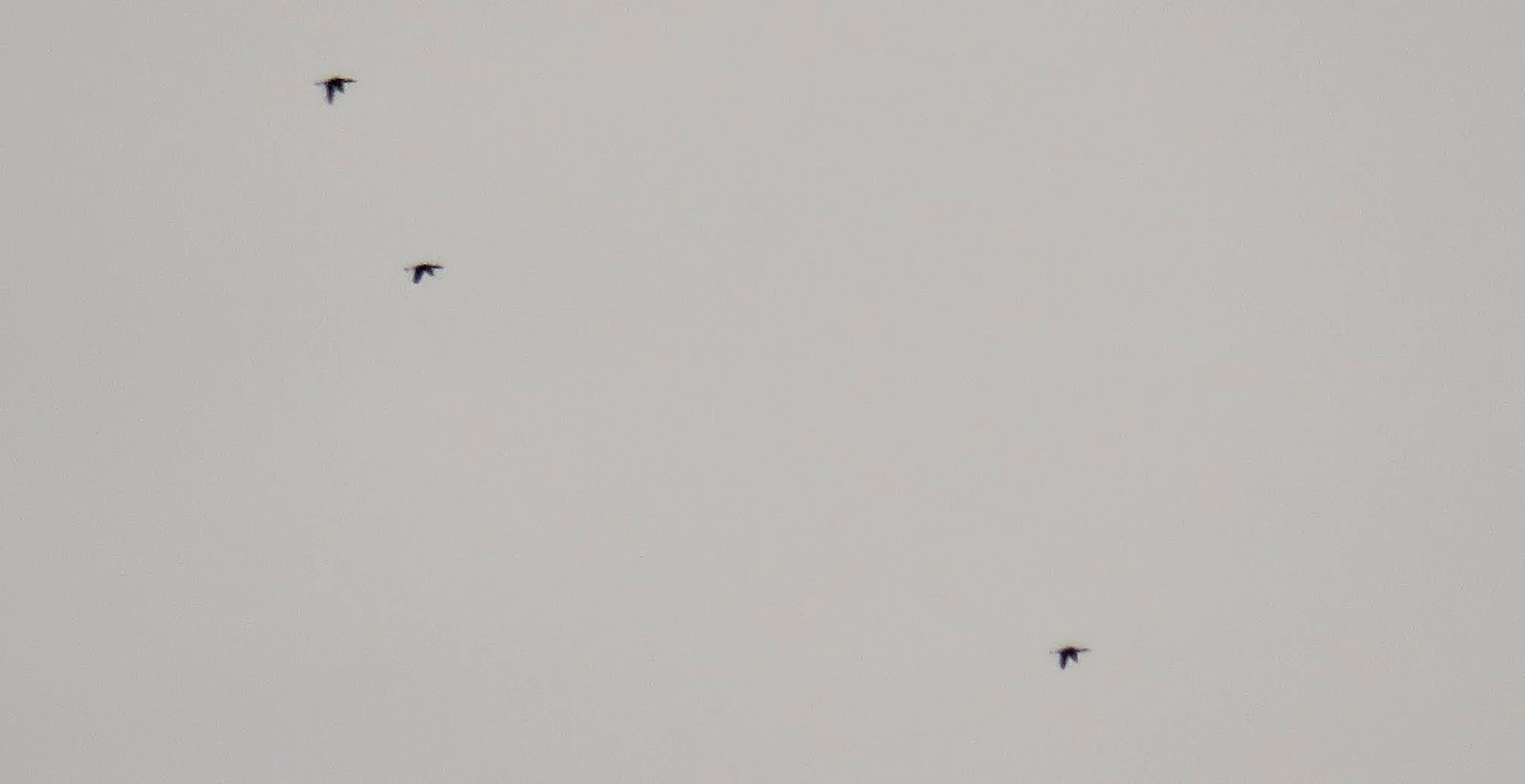The Great Northern Diver question
As I have already mentioned in the last post, on the morning of November 11th, while recording a strong movement of Chaffinches over Porth (just outside Newquay) in Cornwall, I observed five Great Northern Divers, seemingly flying on a similar line along with the finches. I think it is worth elaborating on these birds and try and understand what they were up to. I was looking almost due north, along a cliff-line that runs down from Trevose Head until it meets Porth (on a NNE-SSW axis), where the coast suddenly kinks away and heads WSW. Not quite a 90 degree turn, but abrupt all the same.
The first bird appeared at approximately 09.00hrs, and was picked up coming in off of the sea, at a fair height. Obviously a heavy Diver, scope views were able to confirm it as a Great Northern. I was somewhat surprised when the bird carried on with its S or even SE bearing, shunning the coast and heading inland, gaining height as it did so. I was quite excited by this. My pulse quickened even further when at 09.11hrs a group of four more divers appeared, higher than the first, on a similar bearing. These appeared to have been flying down the cliff line from the north, but when reaching the kink in the coast carried on inland, gaining height, veering off to the S. I was able to pick them up in the scope and also take a record shot of three of the birds, confirming them as, once again, Great Northern.
Now, what were they up to? There is a possibility that once past me, and out of my view, they swung west. But why gain height when hitting land and head in a purposeful, inland, direction? If you look at a map of Cornwall, and plot the Divers flight from Porth (if they continued on this line), it heads straight to the Fal Estuary. The distance between Porth and Falmouth is 17.8 miles (as the Great Northern Diver flies). That isn't a great distance for a bird that is likely to have flown all the way from Iceland to winter on our shores (and maybe a little further south). The peak arrival time of our wintering Great Northern Divers is during October and November. I'd love to think that I had witnessed these birds take a short cut, across country, to take up their winter residency along the south coast of Cornwall or Devon. Whatever they were doing, it made my day.





Comments
Interesting observation. Presumably at a height they are able to see the English Channel.
Was it good visibility? For smaller waterbirds I guess there are predator dangers but not a Great Northern Diver. Might be worth investigating if anyone else has seen the phenomena.
Best Wishes
Bob Smith
I've calculated that given good visibility and assuming no high obstacles in view
to see Falmouth at 17.8 miles the divers only need to climb to 62meters or about 190feet.
Best Wishes
Bob
Similar I think to the cross-land passage of Pomarine Skuas. Years ago I was at Queensferry on the forth west of Edinburgh. A local birder told me the arctics would turn back at the bridge but the Poms kept going. Then a few years later a birder in Northern Ireland told me that they get Poms on easterly winds and the suspected a cross-land route. And now of course we have the regular passage up the Solway, and presumably on over land.
As various have said above. I think with decent visibility a bit of height allows birds to see a long way.
Dipper, although I have seen other ‘water’ species come in off the sea before and head inland, divers doing so was a first for me.
Stewart, maybe it is a regular thing, but I’ve not heard many birders report divers head off inland (at least not groups).